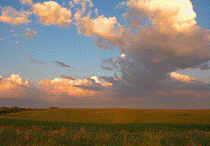North American Prairie Conference
Date of this Version
2004
Abstract
A degraded oak savanna in southwestern Wisconsin is being restored using intensive cutting of undesirable shrubs- buckthorn (Rhamnus cathartica), prickly ash (Zanthoxylum americanum), honeysuckle (Lonicera spp.)-and selective removal of trees that are crowding the open-grown bur (Quercus macrocarpa) and white (Q. alba) oaks. Land use records and historic aerial photographs have been used to guide the restoration process. Slippery elm (Ulmus rubra), black walnut (Juglans nigra), black cherry (Prunus serotina), and black oak (Q. velutina) are being removed by cutting and burning or by converting to lumber or firewood. Hundreds of aspen (Populus tremuloides and P. grandentata) have been killed by girdling with subsequent cutting and burning. Management involves controlled burns and extensive weed control. Removal of invasive shrubs and trees has exposed the ground layer to higher light intensities and stimulated the growth of savanna forbs and grasses. A number of typical herbaceous savanna species have reappeared after clearing or have been successfully introduced from local sources. However, control of brambles (Rubus spp.) and regrowth of buckthorn and honeysuckle remain principal problems. One savanna species endangered in Wisconsin-purple milkweed (Asclepias purpurascens)-was first seen in the savanna after a single controlled burn, and appears to be spreading. The redheaded woodpecker (Melanerpes erythrocephalus), a typical savanna bird, was first seen after shrub and canopy clearing in the savanna. Tree removal is a slow and expensive operation, and strategies for preventing damage to the groundlayer during tree removal had to be devised. About 70 acres (28 hectares) of savanna have been restored during nine years.


Comments
Published in Dave Egan & John A. Harrington, editors, Proceedings of the 19th North American Prairie Conference: The Conservation Legacy Lives On..., University of Wisconsin-Madison, August 8-12, 2004 (Proceedings of the North American Prairie Conference, 19), Madison, WI: University of Wisconsin-Madison, 2004.